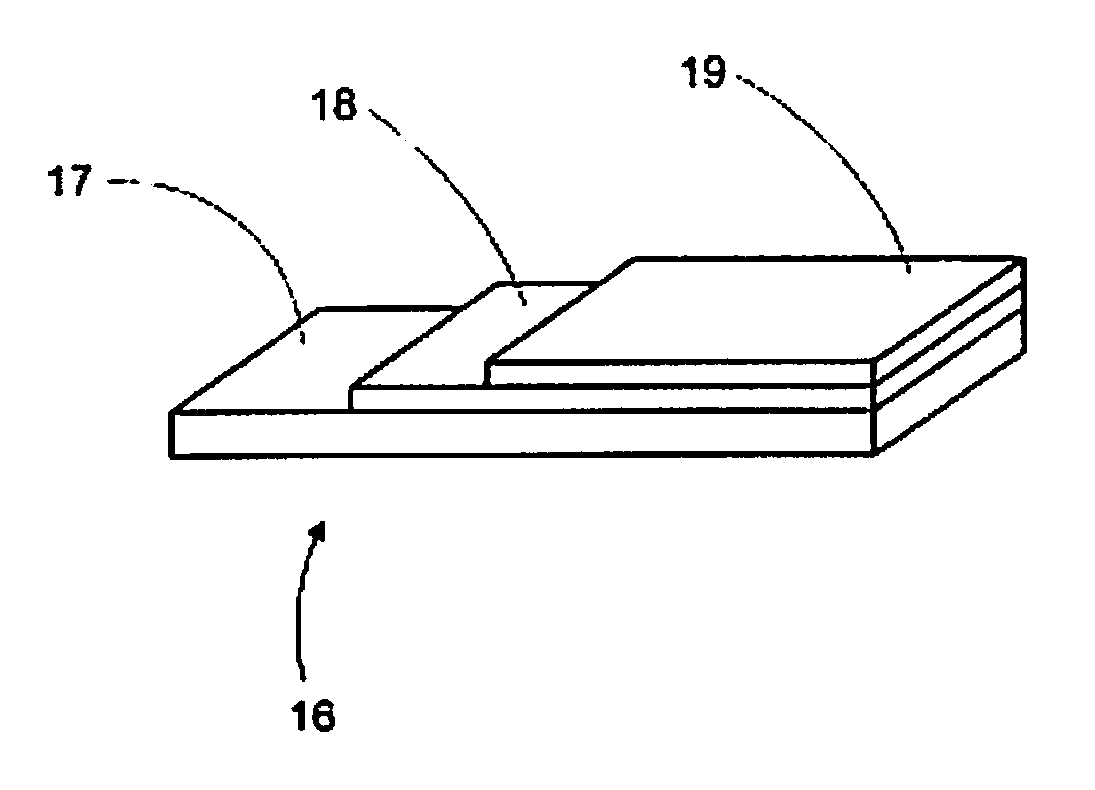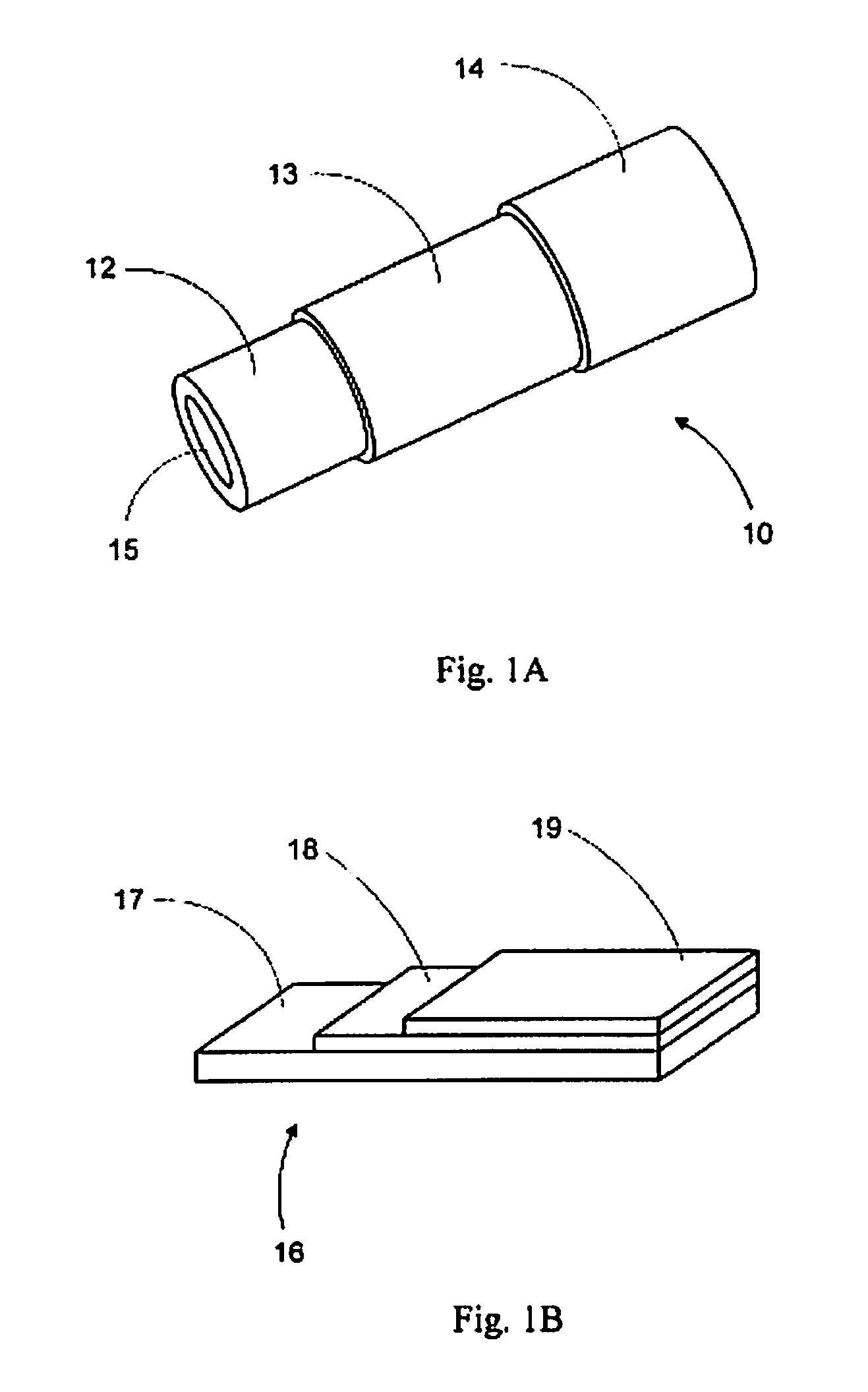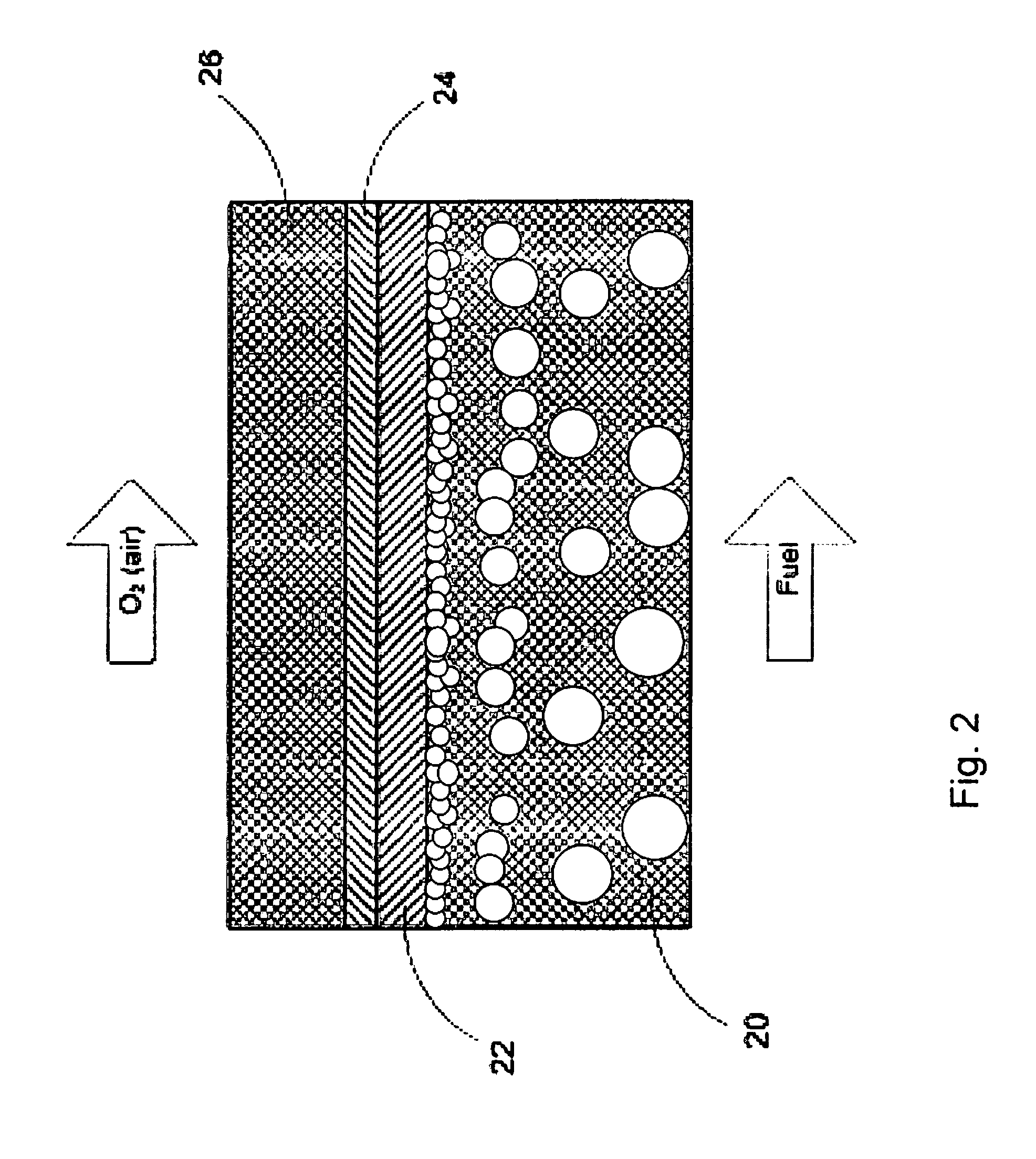Electrode for a solid oxide fuel cell and method for its manufacture
a solid oxide fuel cell and electrode technology, applied in the manufacture of butter, auxillary shaping apparatus, domestic applications, etc., can solve the problems of affecting the type of seal, adding complexity to the overall design, and not being practical for hydrocarbon based fuels, etc., to achieve the effect of dissipating thermal stresses, realiability and durability, and easy dissipation of applied stresses
- Summary
- Abstract
- Description
- Claims
- Application Information
AI Technical Summary
Benefits of technology
Problems solved by technology
Method used
Image
Examples
example 1
[0094]An anode-forming slurry composition is prepared from a powder form of NiO admixed with a powder form of yttrium-stabilized zirconia (YSZ) so that following the reduction of the NiO, the amount of Ni in the anode will range from 30 to 80 vol. %. The anode-forming slurry composition of the mixed powders further includes water as solvent, a polyacrylic acid as a dispersant and methacrylamide, a cross-linkable polymer, as a binder. Suitable slurry compositions can possess 70 to 90 wt % total solids loading (NiO+YSZ), 5 to 25 wt % water, 0.1 to 5 wt % dispersant and 1 to 15 wt % binder. The composition is introduced into a sealed chamber, mixed until homogeneous and then chilled between 8 to 10° C.
[0095]Carbon dioxide gas is introduced into the sealed chamber (carbonation chamber) at a partial pressure of 1-2 atm(s) greater than ambient where it dissolves within the slurry. The chilled, carbonated slurry is thereafter transferred from the carbonation chamber to a suitably configure...
example 2
[0097]An ink-forming slurry is prepared from a mixture of perovskite material as the material for a cathode, e.g., LaSrMnO3, and another material as an electrolyte, e.g., YSZ, each in the range of from 35 to 60 wt %, and further includes solvent, dispersant and binder as in Example 1. Ink-forming slurry compositions can possess from 35 to 60 wt % solids loading (cathode+electrolyte or 100% cathode), 30 to 60 wt % solvent and 1 to 10 wt % each of the dispersant and binder. The components of this slurry are introduced into a sealed chamber (carbonation chamber) where they are mixed until homogeneous and are thereafter chilled to between 8 and 10° C. Carbon dioxide gas is then introduced into the chilled slurry at a partial pressure of about 1-2 atm(s) greater than ambient where it dissolves in the slurry.
[0098]The ink-forming slurry in a semi-fluid state is then removed from the carbonation chamber and immediately coated onto a suitable substrate, e.g., a sintered electrolyte coated a...
PUM
| Property | Measurement | Unit |
|---|---|---|
| partial pressure | aaaaa | aaaaa |
| temperature | aaaaa | aaaaa |
| temperatures | aaaaa | aaaaa |
Abstract
Description
Claims
Application Information
 Login to View More
Login to View More - R&D
- Intellectual Property
- Life Sciences
- Materials
- Tech Scout
- Unparalleled Data Quality
- Higher Quality Content
- 60% Fewer Hallucinations
Browse by: Latest US Patents, China's latest patents, Technical Efficacy Thesaurus, Application Domain, Technology Topic, Popular Technical Reports.
© 2025 PatSnap. All rights reserved.Legal|Privacy policy|Modern Slavery Act Transparency Statement|Sitemap|About US| Contact US: help@patsnap.com



